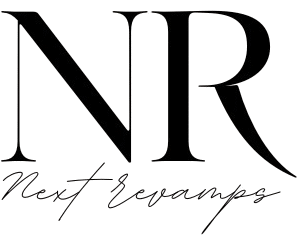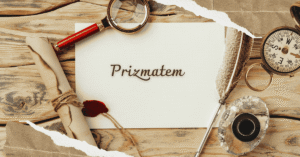In a world increasingly focused on convenience and sustainability, a quiet revolution is happening at the top of your takeaway cup. Meet the Pappedeckel (a German-derived term gaining traction for cardboard lids). More than just a simple cover, this humble piece of engineered paperboard is a key player in the global shift away from single-use plastics. But what exactly is it, and why is it becoming the go-to choice for businesses and environmentally conscious consumers alike? This article dives deep into the world of pappedeckel, exploring its history, benefits, and its crucial role in building a greener future.
A Brief History: The Evolution of the Cardboard Lid
The story of the pappedeckel begins with the broader history of disposable packaging. For decades, the default for hot beverage lids was polystyrene plastic. It was cheap and effective but came with a heavy environmental cost. As awareness of plastic pollution grew, the search for alternatives intensified.
The earliest cardboard lids were simple, flat discs used for items like ice cream tubs or disposable food containers. They were functional but lacked the sophisticated design needed for hot, liquid-filled cups on the go. The evolution truly accelerated with the global coffee culture boom. The industry demanded a coffee cup lid that was secure, leak-resistant, and allowed for drinking without removing the cover. This drove innovation in paperboard lamination and manufacturing, leading to the durable, functional, and compostable pappedeckel we see today.
Different Types of Pappedeckel for Every Need
The term pappedeckel isn’t one-size-fits-all. It encompasses a range of designs tailored for specific applications:
-
Coffee Cup Lids: The most common type. These often feature a sip-opening and a locking mechanism to prevent spills. They are designed to withstand the heat and moisture of a hot beverage without becoming soggy.
-
Food Container Lids: Used for soup bowls, salad boxes, and takeaway food containers. These are typically flatter and broader, providing a secure seal to keep food fresh and prevent leaks.
-
Customized Branded Lids: A powerful marketing tool. Businesses can print their logos, brand colors, or promotional messages directly onto the paper cup cover, turning every takeaway order into a brand advertisement.
Uses of Pappedeckel in Modern Daily Life
The application of pappedeckel extends far beyond your local coffee shop. Its versatility makes it a staple in various settings:
-
Restaurants & Takeaway Services: Essential for securing drinks and soups for delivery and pickup.
-
Events, Catering, and Cafes: Ideal for large events where speed, hygiene, and disposability are key. They are a cornerstone of disposable packaging for large-scale operations.
-
Household Uses: Great for covering cups during travel, for children’s drinks, or as a temporary cover for homemade beverages.
The Eco-Friendly Champion: Sustainability Aspects of Pappedeckel
This is where the pappedeckel truly shines. As the world grapples with plastic pollution, this simple switch makes a significant impact.
-
Biodegradable vs. Plastic: Unlike conventional plastic lids that can persist in the environment for centuries, a pappedeckel made from pure, responsibly sourced paperboard is biodegradable and compostable under the right conditions.
-
Supporting Sustainability Goals: By opting for paper-based eco-friendly packaging, businesses directly reduce their plastic footprint. This aligns with both consumer demand and tightening global regulations, such as the European Packaging Waste Regulations, which aim to reduce packaging waste and promote a circular economy. You can learn more about these directives on the European Commission’s website.
Key Advantages of Choosing Pappedeckel
Why are businesses making the switch? The benefits are clear:
-
Cost-Effectiveness: With advancements in manufacturing, paperboard lids have become highly competitive with plastic alternatives.
-
Lightweight and Convenient: They are easy to store, transport, and apply, streamlining operations for busy cafes.
-
Safe for Beverages: High-quality pappedeckel products are lined with materials safe for contact with both hot and cold drinks, ensuring no transfer of harmful chemicals.
Addressing the Challenges and Limitations
No product is perfect, and the pappedeckel has its own set of challenges that innovators are working to solve.
-
Perceived Durability Issues: While modern designs are highly effective, some consumers still perceive them as less robust than plastic. However, manufacturing techniques have largely overcome this.
-
Recycling Challenges: The sustainability of a pappedeckel can be compromised if it has a plastic lining. It’s crucial for consumers to check local composting guidelines. The industry is moving towards fully compostable linings to resolve this issue.
You can also read our recent articles
The Future of Pappedeckel in the Packaging Industry
The future is bright for this sustainable solution. We can expect to see:
-
Innovative Designs: New shapes, easier sip-openings, and even smarter locking mechanisms.
-
Accelerated Reduction of Plastic Waste: As more cities and countries ban single-use plastics, the adoption of pappedeckel and other sustainable packaging solutions will skyrocket.
-
Alignment with Global Trends: The push for a circular economy, where materials are reused and regenerated, positions the compostable pappedeckel as a packaging staple for decades to come.
Conclusion
The pappedeckel is much more than just a lid. It is a symbol of a conscious shift towards responsibility in our daily consumption. It proves that convenience does not have to come at the expense of our planet. For businesses, it’s a practical, marketable, and ethical choice. For individuals, it’s a simple way to make a positive impact with every coffee they enjoy. By understanding its benefits and supporting its use, we can all contribute to a cleaner, greener world—one lid at a time.








One thought on “Pappedeckel: The Unsung Hero of Sustainable Packaging”